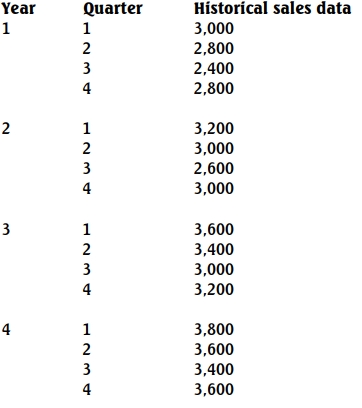- 20 Marks
PM – Nov 2021 – L2 – Q4 – Performance Measurement Systems
Adjust sales for seasonal variations and discuss deseasonalised data, along with the challenges of participative budgeting.
Question
You work as the assistant to the management accountant for Henry Limited, a medium-sized manufacturing company. One of its products, Product P, has been very successful in recent years, showing a steadily increasing trend in sales volumes. Sales volumes for the four quarters of last year were as follows:
| Quarter | 1 | 2 | 3 | 4 |
|---|---|---|---|---|
| Actual sales volume (units) | 420,000 | 450,000 | 475,000 | 475,000 |
A new assistant has recently joined the marketing department and she has asked you for help in understanding the terminology used in preparing sales forecasts and analysing sales trends. She said: “My main problem is that I do not see why my boss is so enthusiastic about the growth in Product P’s sales volume. It looks to me as though the rate of growth is really slowing down and has actually stopped in quarter 4. I am told that I should be looking at the deseasonalised or seasonally adjusted sales data, but I do not understand what is meant by this.”
You have found that Product P’s sales are subject to the following seasonal variations:
| Quarter | 1 | 2 | 3 | 4 |
|---|---|---|---|---|
| Seasonal variation (units) | +25,000 | +15,000 | 0 | -40,000 |
Required:
a.
i. Adjust for the seasonal variations to calculate deseasonalised or seasonally adjusted sales volume (i.e., the trend figures) for each quarter of last year. (5 Marks)
ii. Assuming that the trend and seasonal variations will continue, forecast the sales volumes for each of the four quarters of next year. (4 Marks)
b. Explain what is meant by seasonal variations and deseasonalised or seasonally adjusted data. Indicate how they can be useful in analysing a time series and preparing forecasts. (5 Marks)
c. State the arguments for and challenges arising from managers participating in setting their budget targets. (6 Marks)
Find Related Questions by Tags, levels, etc.


